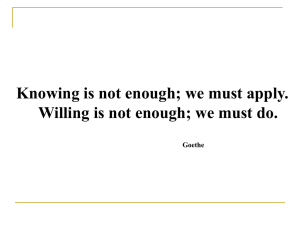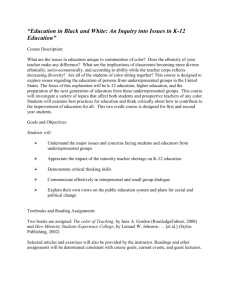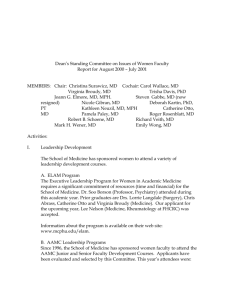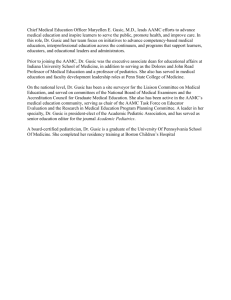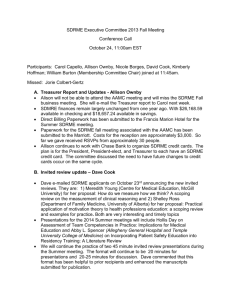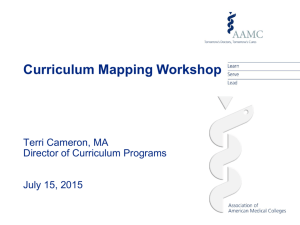Contact: Retha Sherrod - University of Michigan
advertisement
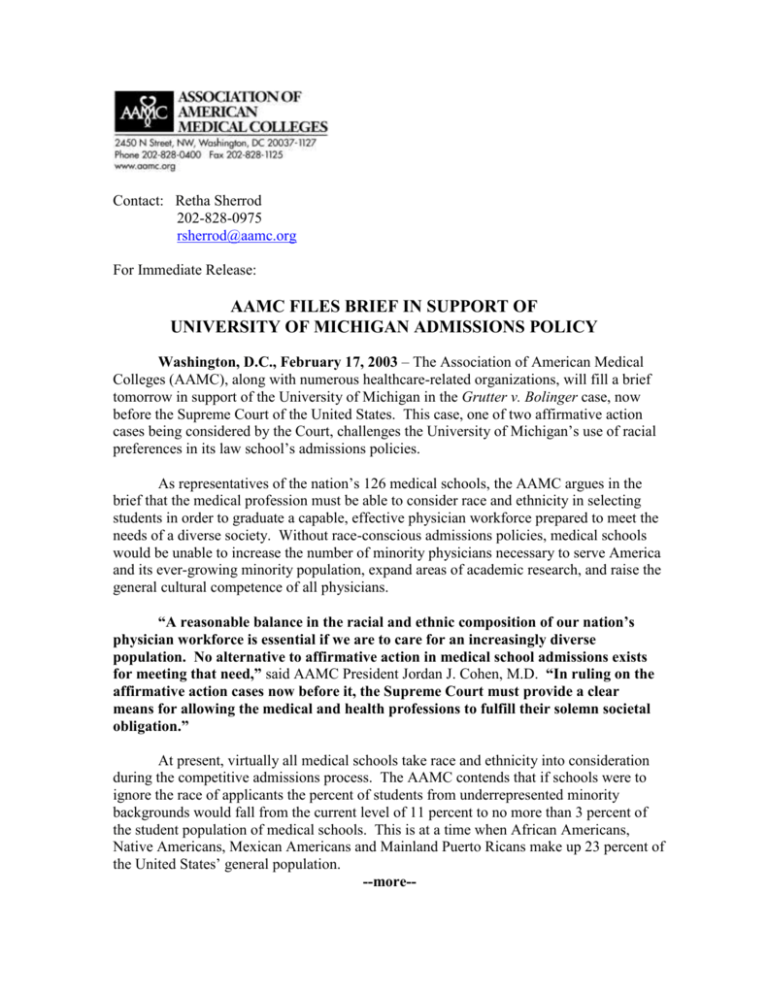
Contact: Retha Sherrod 202-828-0975 rsherrod@aamc.org For Immediate Release: AAMC FILES BRIEF IN SUPPORT OF UNIVERSITY OF MICHIGAN ADMISSIONS POLICY Washington, D.C., February 17, 2003 – The Association of American Medical Colleges (AAMC), along with numerous healthcare-related organizations, will fill a brief tomorrow in support of the University of Michigan in the Grutter v. Bolinger case, now before the Supreme Court of the United States. This case, one of two affirmative action cases being considered by the Court, challenges the University of Michigan’s use of racial preferences in its law school’s admissions policies. As representatives of the nation’s 126 medical schools, the AAMC argues in the brief that the medical profession must be able to consider race and ethnicity in selecting students in order to graduate a capable, effective physician workforce prepared to meet the needs of a diverse society. Without race-conscious admissions policies, medical schools would be unable to increase the number of minority physicians necessary to serve America and its ever-growing minority population, expand areas of academic research, and raise the general cultural competence of all physicians. “A reasonable balance in the racial and ethnic composition of our nation’s physician workforce is essential if we are to care for an increasingly diverse population. No alternative to affirmative action in medical school admissions exists for meeting that need,” said AAMC President Jordan J. Cohen, M.D. “In ruling on the affirmative action cases now before it, the Supreme Court must provide a clear means for allowing the medical and health professions to fulfill their solemn societal obligation.” At present, virtually all medical schools take race and ethnicity into consideration during the competitive admissions process. The AAMC contends that if schools were to ignore the race of applicants the percent of students from underrepresented minority backgrounds would fall from the current level of 11 percent to no more than 3 percent of the student population of medical schools. This is at a time when African Americans, Native Americans, Mexican Americans and Mainland Puerto Ricans make up 23 percent of the United States’ general population. --more-- Page 2—AAMC Brief In its argument, the AAMC brief explains first why society has a critical need for more minority physicians. Some of the key reasons— Existing health care disparities will only increase as the minority population grows. Minority physicians are more willing to practice in underserved areas. Minority patients’ trust in the health care system increases when treated by members of their own racial or ethnic group. More minorities in medical student populations lead to diversity in medical research. The brief goes on to point out how classroom diversity also helps to create physicians and health care managers who are both proficient and culturally competent. “Only by encountering and interacting with others from different life experiences can students transcend their own viewpoint and see the world from a different perspective.” (Page 17, AAMC amicus brief, Grutter v. Bolinger) Such awareness is an invaluable asset for physicians entering the workforce in the 21st century. An additional key point examined in the AAMC brief is how reliance solely on academic credentials would dramatically decrease the number of minority medical students. Only very small percentages of underrepresented minority applicants score as well on the Medical College Admissions Test (MCAT®) and maintain as high a grade point average as the great majority of white and Asian applicants. The reasons for this are not clearly understood but may include: poorer quality schools available to many minority students; lower educational attainment of parents; and stereotypic attitudes that stifle academic achievement. Despite this reality, medical school admissions officers have been successful in identifying the qualities of mind and spirit minority applicants need to succeed as medical students and future doctors. Over 90 percent of the underrepresented minority students admitted to medical school graduate. A complete copy of the AAMC brief can be found at (http://www.aamc.org/affirmativeaction). ### The Association of American Medical Colleges represents the 126 accredited U.S. medical schools; the 16 accredited Canadian medical schools; some 400 major teaching hospitals, including Veterans Administration medical centers; more than 105,000 faculty in 92 academic and scientific societies; and the nation's 66,000 medical students and 97,000 residents.
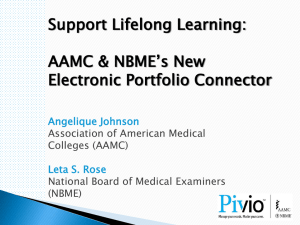

![Faculty Forward [PDF]](http://s2.studylib.net/store/data/005260716_1-e64c3a84465fecffce46203374b03bc3-300x300.png)

